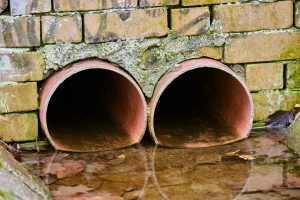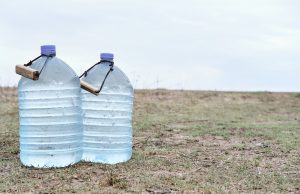
South Africa’s Wastewater Treatment Crisis: The Unseen Threat
In South Africa, a silent and devastating crisis is unfolding beneath the surface, one that threatens the very core of

In light of ever-increasing water scarcity and deteriorating water quality nationally, many people are turning to JoJo tanks and their counterparts to harvest rainwater and avoid the next water outage. While these water storage tanks are helpful, and also often a lifeline in the face of water scarcity, they are ineffective when not properly maintained. Therefore, keeping your JoJo tank clean is crucial. This article will cover the basics of JoJo water tanks: what they are, why they’re important additions to your home, and how to keep them clean.
First, it may be helpful to understand what a JoJo tank is and what it does to fully comprehend the importance of keeping your JoJo tank clean. While many people refer to all water storage tanks as JoJo tanks, JoJo tanks are actually a specific brand of water storage tanks that have gained popularity in South Africa. It’s useful to note that all information provided in this article, including usefulness and cleaning tips, applies not only to JoJo tanks but to all other water storage tanks.
So, you may be wondering, “How does a JoJo tank work?” JoJo water tanks can be installed and used in many different ways. Three of the most common ways are:
It’s important to note that no matter what type of tank fits your needs, keeping your JoJo tank clean is crucial, even if it is only connected to the municipal water supply.
One reason tank and water maintenance remains crucial, no matter the type, is due to the deteriorating quality of water in South Africa. According to the 2023 Blue Drop report, which is an assessment of the state of all 958 water supply systems in the country, only 26 out of the 958 water supply systems met the requirements, a decrease from the previous number of 44 in 2014. The Blue Drop report evaluates the following criteria:
Considering these results, without proper maintenance, stored water can be useless if the water is not treated. Additionally, JoJo water tanks can harbor sediment buildup, algae growth, external debris, and bacteria. But don’t worry, with simple practices, you can make sure your tank and its water are safe and clean.

Now that we’ve established what a JoJo tank is, how it works, and why keeping your JoJo tank clean is important, we can discuss the different ways to clean out your tank. One of the most common contaminants of JoJo tanks is sediment buildup, often called sludge. Sludge is a natural buildup of sediment and other organic material that accumulates over time. You can test for the amount of sludge in your tank by taking a water sample from the bottom of your JoJo tank, letting the water settle, and observing the amount of sediment in the cup. Another common contaminant is algae. If you notice algae growth in your tank, make sure to check for any holes or cracks that could be allowing light exposure.
While keeping your JoJo tank clean, it is recommended that you perform regular maintenance every 6-12 months. To do so, follow these steps:
Keeping your JoJo tank clean often involves more than preventing visible contaminants. Without treatment, bacteria such as E. coli can grow. To identify if your JoJo tank is harboring any bacteria, consider a commercially available water test kit that tests for E. coli and total coliform bacteria. Additionally, products such as Aquatabs can also help make your water safer for both use and consumption. Aquatabs is a water purification tablet that kills most harmful microorganisms, in addition to preventing the buildup of sludge. This makes the Aquatabs 8.68g tablets the perfect all-around JoJo tank cleaner.

As we’ve established, keeping your JoJo tank clean is essential to its use. Despite their need for a cleaning regime, JoJo tanks are extremely useful and can provide you and your family with regular peace of mind regarding your water. With proper care, JoJo water tanks can provide a backup water supply during water outages or times of water contamination. Just be sure to clean the tanks regularly and use products such as Aquatabs to ensure safer water.

In South Africa, a silent and devastating crisis is unfolding beneath the surface, one that threatens the very core of

For many South Africans, the question of water safety is a daily concern. From inconsistent municipal supplies to the need

Clean water isn’t always at your fingertips, but with P&G Purifier of Water Sachets, the solution can be in your